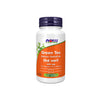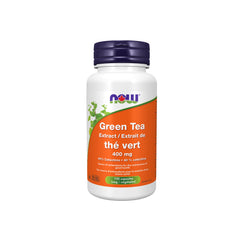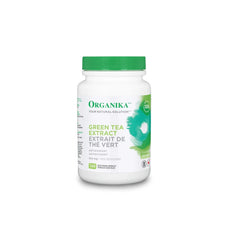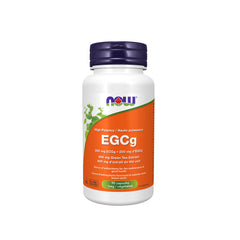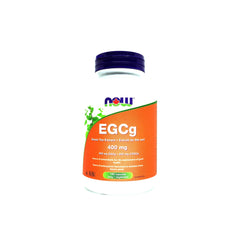Active Green Tea™
Longevity Enhancing Antioxidant
- Potent green tea leaf extract, high in EGCg
- Enhances weight loss by boosting metabolism
- Potent anti-aging effects
- Researched backed dose
Non-medicinal Ingredients: ascorbyl palmitate, sodium stearyl fumarate. Capsule: hypromellose.
Green tea provides powerful antioxidants, promotes longevity, cardiovascular health, healthy weight management, healthy cellular growth & differentiation, liver health, and more. AOR™ Active Green Tea is a high-potency standardized extract of green tea, high in epigallocatechin gallate (EgCG), believed to be the key phytonutrient responsible for green tea’s health benefits. Studies most consistently report health benefits in persons drinking 10 cups a day of high-EgCG sencha-style Japanese green tea; each cup of this tea contains 150 milligrams of EgCG. The labels of most green tea extracts exaggerate the number of cups of tea represented in their capsules by comparing the product to poor-quality teas. AOR™ Active Green Tea allows you to more fully enjoy the healthy properties of a Sencha-rich lifestyle without consuming large volumes of tea. Active Green Tea also contains a tiny amount of caffeine to optimize its benefits while minimizing any negative effects from caffeine.
80005898(90 Vegi-Caps)
80005898 (180 Vegi-Caps)
Green tea catechins help protect plasma and lipoproteins from oxidative damage by increasing blood antioxidant capacity.
AOR™ guarantees that all ingredients have been declared on the label. Contains no wheat, gluten, nuts, peanuts, sesame seeds, sulphites, mustard, soy, dairy, eggs, fish, shellfish or any animal by product.
To equate the EGCg consumption of the best Japanese studies, take 1 capsule three times daily with food, or as directed by a qualified health care practitioner.
Consult a Healthcare practitioner prior to use if you are pregnant or breastfeeding. Consult a health care practitioner for use beyond 12 weeks, if you have a liver disorder, or if you have an iron deficiency. Rare, unpredictable cases of liver injury associated with green tea extract-containing products have been reported (in Canada and internationally). Discontinue use if you develop symptoms of liver trouble, such as yellowing of the skin/eyes (jaundice), stomach pain, dark urine, sweating, nausea, unusual tiredness and/or loss of appetite and consult a health care practitioner.
Green Tea (Camellia sinensis)
- Normal cell growth and differentiation
The information and product descriptions appearing on this website are for information purposes only, and are not intended to provide or replace medical advice to individuals from a qualified health care professional. Consult with your physician if you have any health concerns, and before initiating any new diet, exercise, supplement, or other lifestyle changes.
Background
AOR Active Green Tea is a high-potency standardized extract of green tea, high in epigallocatechin gallate (EgCG), believed to be the key phytonutrient in green tea, responsible for its health benefits. Studies most consistently report health benefits in persons drinking 10 cups a day of high-EgCG sencha-style Japanese Green Tea; each cup of this tea contains 150 milligrams of EgCG. The labels of most green tea extracts exaggerate the number of cups of tea represented in their capsules by comparing the product to poor-quality teas. AOR’s Active Green Tea allows you to more fully enjoy the healthy properties of a Sencha-rich lifestyle without consuming large volumes of tea.
While herbal “teas” can be brewed from the leaves, flowers, or even roots of almost anything that grows out of the Earth, true tea – both green and black – comes from the leaves of Camellia sinensis. The difference in taste and in health benefits comes from the way the tea leaves are processed: to make black tea, the leaves are fermented, which oxidizes many of the antioxidants present in the leaves, while green tea is produced by lightly steaming the fresh-cut leaf.
Green Tea was brought to Japan by Buddhist monks from China, and the Japanese people quickly embraced the soothing, grassy brew. Today, the citizens of Japan boast the longest average lifespan in the world, and there are realms of research to suggest that green tea is a major factor in their robust health.
Research
A Long, Healthy Life
Research in experimental animals has produced some amazing results with green tea extracts. More important to us is the human evidence for the health benefits of Green Tea consumption. Extensive epidemiological evidence shows that people consuming high amounts of Japanese Sencha green tea live longer, have healthier cholesterol levels, and suffer less cardiovascular and liver disease.
How Much Tea?
While some studies have found green tea to have protective effects, other studies have found no difference among higher and lower drinkers of Green Tea. As with so many other things, the key appears to lie in the amount of green tea being consumed. In the New England Journal of Medicine study, drinking five or more cups of green tea a day put people into the highest consumption group. By contrast, the most consistent epidemiological evidence for a protective effect of green tea comes from the consumption of ten cups or more of Japanese Sencha per day.
Market Trends
How Do You Get that in Pills?
Few Westerners drink 10 cups of Green Tea a day. So to get green tea’s benefits, many health-conscious people have turned to standardized extracts of the green tea leaf itself. That seems to be an especially attractive option when many companies advertise small green tea pills which allegedly contain the equivalent of five to ten cups of Green Tea apiece. Unfortunately, nearly all green tea extract capsules contain only a fraction of the green tea “cup-equivalents” than their manufacturers claim.
These companies aren’t flat-out lying, but they’re using the wrong yardstick – or, to be more precise, the wrong “cup”. The problem is that the amount of EGCG (the most powerful component) and other goodies in a cup of green tea can vary over a wide range, depending on the kind of green tea, the region where it’s grown, the brewing time, tea leaf, kind of teabag – and, of course, the size of the cup! By choosing to compare a supplement to the poorest-quality green tea infusions, supplement companies use “creative accounting” to evaluate the potency of their pills. They can inflate the comparison, asserting that their products’ 100 to 200 milligrams of EGCG is equivalent to five to ten cups of Green Tea.
But this is just misleading. When all of these factors are taken into account, and when you consider that the most consistent research on green tea’s health-enhancing effects in humans comes from drinkers of Japanese Sencha, the “gold standard” cup of green tea can contains 150 milligrams of EGCG. This means, unfortunately, that few green tea capsules even deliver the equivalent of even one full cup of Japanese green tea a day – let alone the ten cups that is most consistently associated with good health and long life.
The Caffeine Conundrum
Green tea contains very little caffeine compared to coffee – but of course, it can still add up if you start drinking 10 cups of the steaming brew a day. Indeed, one clinical trial which has been using ground tea solids as its ‘drug’ has reported significant side-effects – including insomnia, fatigue, confusion, nausea, diarrhea, stomach pain, and even vomiting – linked to the caffeine content.
Some green tea supplements are fully decaffeinated to avoid any such problems. While this approach is better than adding as much as 500 milligrams of extra caffeine to your day, these supplements are inherently less effective than real tea, because several studies have found that caffeine itself plays a significant role in the beneficial effects of Green Tea.
There are other benefits to moderate intake of caffeine, despite the clear negative impacts of being a full-fledged caffeine junkie. For instance, a large body of research now suggests that modest caffeine consumption reduces your risk of developing Parkinson’s disease – probably as a result of caffeine’s ability to modulate adenosine A2A receptors in the brain. Another example: Green Tea polyphenols and caffeine synergize to increase the body’s thermogenic fat-burning activity – effects with important implications for the Battle of the Bulge, which is an engagement important for health and vanity alike.
Thus, rigorously eliminating the caffeine content from Green Tea – whether you get it in cup or capsule – is not the best strategy for your long-term health. While a zero-tolerance approach may be the only way for a few extremely caffeine-sensitive individuals to get the benefits of EGCG, most people will be better off getting at least a little caffeine in with their green tea. Lightly-caffeinated green tea extracts provide a happy medium between caffeine-induced side effects and the loss of significant health benefits.
AOR Advantage
If you’re looking to use Green Tea for longevity and to guard against age-related disease, it only makes sense to get the best-backed dose of the best-backed molecule. Indeed, it’s these kinds of doses – 800 to 1600 milligrams of EGCG per day that are being used in the human clinical trials that have begun in the last few years.
Putting it All in a Capsule
So getting the full benefits of Green Tea – an icon of Zen simplicity – turns out to involve taking a lot of factors into consideration. Green tea extracts should be HPLC standardized to their content of EGCG. They should make it convenient to get 1500 milligrams of EGCG a day, to match the strong epidemiological evidence of health benefits in Japanese Sencha drinkers. And they should contain at least a little caffeine, so that the often-synergistic interactions between EgCG and caffeine can be unleashed. Put it all together, and you’ll have squeezed a remarkable amount of health benefit into a few small capsules such AOR’s Active Green Tea formula.
References
Fujiki H, Suganuma M, Imai K, Nakachi K. Green tea: cancer preventive beverage and/or drug. Cancer Lett. 2002 Dec 15; 188(1-2): 9-13.
Inoue M, Tajima K, Hirose K, Hamajima N, Takezaki T, Kuroishi T, Tominaga S. Tea and coffee consumption and the risk of digestive tract cancers: data from a comparative case-referent study in Japan. Cancer Causes Control. 1998 Mar; 9(2): 209-16.
Mukhtar H, Ahmad N. Tea polyphenols: prevention of cancer and optimizing health. Am J Clin Nutr. 2000 Jun; 71(6 Suppl): 1698S-702S.
Nakachi K, Matsuyama S, Miyake S, Suganuma M, Imai K. Preventive effects of drinking green tea on cancer and cardiovascular disease: epidemiological evidence for multiple targeting prevention. Biofactors. 2000; 13(1-4): 49-54.
Shibata K, Moriyama M, Fukushima T, Kaetsu A, Miyazaki M, Une H. Green tea consumption and chronic atrophic gastritis: a cross-sectional study in a green tea production village. J Epidemiol. 2000 Sep; 10(5): 310-6.
Tokunaga S, White IR, Frost C, Tanaka K, Kono S, Tokudome S, Akamatsu T, Moriyama T, Zakouji H. Green tea consumption and serum lipids and lipoproteins in a population of healthy workers in Japan. Ann Epidemiol. 2002 Apr; 12(3): 157-65.
Abstract
The acute effect of green tea consumption on endothelial function in healthy individuals.
European Journal of Cardiovascular Prevention & Rehabilitation. 15(3):300-305, June 2008.
Nikalaos A, Charalambos V, Konstantinos A, Baou K, Vasiliadou C, Pietri P, Xaplanteris P, Stepanadi E, Stefanadis C.
BACKGROUND: Tea consumption is associated with decreased cardiovascular risk. Flow-mediated dilatation (FMD) of the brachial artery is related to coronary endothelial function and it is an independent predictor of cardiovascular risk. Black tea has a beneficial effect on endothelial function; the effect, however, of green tea on brachial artery reactivity has not been defined yet.
DESIGN AND METHODS: We studied 14 healthy individuals (age 30 /-3 years) with no cardiovascular risk factors except from smoking (50%) on three separate occasions on which they took: (a) 6 g of green tea, (b) 125 mg of caffeine (the amount contained in 6 g of tea), or (c) hot water. FMD of the brachial artery was measured before each intervention and 30, 90, and 120 min afterward. High-sensitivity C-reactive protein, interleukins 6 (Il-6) and 1b (Il-1b), total plasma antioxidative capacity, and total plasma oxidative status/stress were measured at baseline and at 120 min after each intervention.
RESULTS: Resting and hyperemic brachial artery diameter did not change either with tea or with caffeine. FMD increased significantly with tea (by 3.69%, peak at 30 min, P).
CONCLUSION: Green tea consumption has an acute beneficial effect on endothelial function, assessed with FMD of the brachial artery, in healthy individuals. This may be involved in the beneficial effect of tea on cardiovascular risk.
Tea Catechin Consumption Reduces Circulating Oxidized Low-Density Lipoprotein.
International Heart Journal. 2007;48(6):725-732.
Shigenobu Inami, Masamichi Takano, Masanori Yamamoto, Daisuke Murakami, Kenichiro Tajika, Kenji Yodogawa, Shinya Yokoyama, Norihiko Ohno, Takayoshi Ohba, Junko Sano, Chikao Ibuki, Yoshihiko Seino and Kyoichi Mizuno.
It has been reported that green tea consumption reduces the risk of coronary artery disease and cardiac events. Catechin is a major constituent of Japanese green tea and an antioxidant. Lipids and oxidization of low-density lipoprotein cholesterol (LDL-C) play important roles in heart disease. Therefore, we evaluated the effect of catechin intake on the lipid profile and plasma oxidized LDL. The study population consisted of 40 healthy adult volunteers (10 men, 30 women). Catechin was extracted from green tea leaves. The subjects were randomly divided into two groups, a catechin group (n = 29) and a control group (n = 11). In the catechin group, catechin (500 mg: equivalent to 6 or 7 cups of green tea) was administered orally. Venous blood samples were obtained before eating a meal at the start and after 4 weeks without any lifestyle modification. Plasma oxidized LDL assay was performed with a sandwich-type enzyme immunoassay using anti-oxidized phosphatidylcholine monoclonal antibody. The baseline lipid profiles and tea consumptions were similar between the two groups. Plasma oxidized LDL was significantly decreased after catechin administration (from 9.56 ± 9.2 to 7.76 ± 7.7 U/mL, P = 0.005), while plasma LDL-C, triglyceride, and HDL-C concentrations did not change. Catechin decreased the plasma oxidized LDL concentration without significant change in plasma LDL concentration. The mechanism of the beneficial effects of green tea on cardiovascular health might result from a decrease in plasma oxidized LDL.
Roles for epigallocatechin gallate in cardiovascular disease and obesity: an introduction.
J Am Coll Nutr. 2007 Aug;26(4):362S-5S
McKay DL, Blumberg JB.
After water, tea from Camellia sinensis is the most consumed beverage worldwide. Tea is rich in catechin flavonoids that possess an array of bioactivity including antioxidant, anti-inflammatory, apoptotic, and probiotic mechanisms of action that may contribute to some of the putative health benefits associated with tea intake. A substantial body of evidence indicates that tea and its principal catechin, epigallocatechin gallate (EGCG) may contribute to a reduction in the risk of cardiovascular disease. Recent studies suggest EGCG may also have a positive impact on glucose tolerance and thermogenesis….
Green tea consumption and serum lipids and lipoproteins in a population of healthy workers in Japan.
Ann Epidemiol. 2002 Apr; 12(3): 157-65.
Tokunaga S, White IR, Frost C, Tanaka K, Kono S, Tokudome S, Akamatsu T, Moriyama T, Zakouji H.
PURPOSE: To examine the relation between green tea consumption and serum lipids and lipoproteins.
METHODS: The subjects were 13,916 workers (8476 men and 5440 women) aged 40-69 years at over 1000 workplaces in Nagano prefecture, central Japan. They underwent health screening offered by a single medical institute between April 1995 and March 1996 and did not have morbid conditions affecting serum cholesterol levels. Serum concentrations of total cholesterol, high-density lipoprotein (HDL) cholesterol and triglycerides were measured at the screening. The consumption of green tea and other life-style characteristics were ascertained by a questionnaire. The data were analyzed with multivariate linear model.
RESULTS: Daily consumption of green tea was reported by 86.7% of subjects. Green tea consumption was, statistically, significantly associated with lower levels of serum total cholesterol in both men and women while its associations with serum triglycerides and HDL cholesterol were not statistically significant. The inverse association of serum total cholesterol with green tea consumption appeared to level off at the consumption of more than 10 cups/day. Excluding the outlying subjects drinking more than 10 cups/day (0.4%), the regression analysis adjusting for age, body mass index, ethanol intake, smoking habit, coffee intake, and type of work showed that daily consumption of one cup of green tea was associated with a reduction in serum total cholesterol by 0.015 mmol/L (95% confidence interval 0.006 to 0.024, p < 0.001) in men and 0.015 mmol/L (0.004 to 0.025, p < 0.01) in women. After additional adjustment for selected dietary factors, the inverse association remained statistically significant; one cup of green tea per day was associated with a reduction in serum total cholesterol by 0.010 mmol/L (0.001 to 0.019, p = 0.03) in men and 0.012 mmol/L (0.001 to 0.022, p = 0.03) in women.
CONCLUSION: Consumption of green tea was associated with lower serum concentration of total cholesterol in Japanese healthy workers age 40-69 years; however, green tea consumption was unrelated to serum HDL-cholesterol and triglycerides
